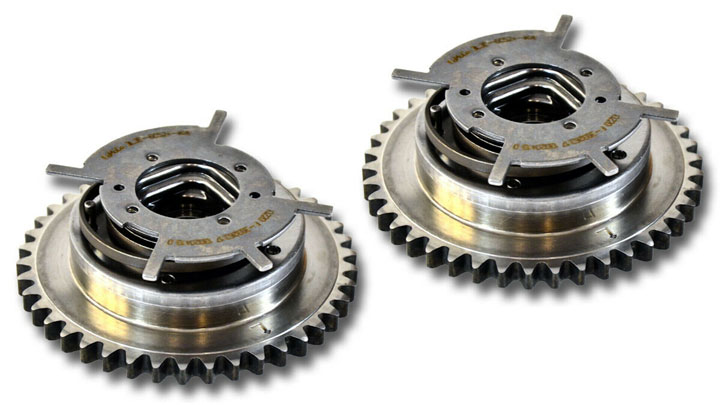5 Symptoms of a Bad Camshaft Adjuster
To increase efficiency, modern engines use variable valve timing (VVT), which adjusts the camshaft timing depending on the conditions. Although VVT engines are efficient, they are susceptible to failure of the camshaft phaser, a specific component that controls the timing of the camshaft.
Knowing the symptoms of camshaft phaser failure and its causes can help you know how to fix this problem before a serious engine failure occurs. Unfortunately, the cost of replacing a camshaft phaser is high, but there are some things you can do to reduce this cost.
What is a Camshaft Adjuster? Camshaft adjusters are an essential component on all engines with variable valve timing. The camshaft phaser itself is responsible for advancing or retarding the position of the engine’s camshaft relative to the crankshaft as commanded by the vehicle’s PCM/ECM.
This effectively changes the timing of each valve lift compared to the typical timing at a static alignment.
Most cam phasers are hydraulically driven by supplying oil through oil control solenoids on VVT engines. These solenoids themselves are electrical rather than hydraulic in nature and are controlled by an electrical signal supplied by the vehicle’s control module.
When the engine’s operating software determines that a certain level of camshaft timing would be more efficient under the circumstances, it applies power/ground to the engine’s oil control solenoid, causing it to open and allowing pressurized oil to flow to the respective camshaft phaser.
This oil pressure indexes the adjuster, which mechanically rotates the engine’s camshaft. Even when everything is fine and working as intended, cam phasers tend to fail more frequently on VVT engines. This makes it even more important to recognize the symptoms of a failing camshaft adjuster.
Symptoms of a Bad Camshaft Adjuster
Failed camshaft adjusters are often accompanied by one or more secondary symptoms. Recognizing these symptoms can help minimize excessive downtime and prevent further engine damage. The following are some of the most common signs of a failed camshaft phaser.
1) Check Engine Light Illuminated
Engine management software is very good at detecting persistent camshaft timing issues and will quickly detect feedback anomalies from one or more sensors that indicate a lack of desirable camshaft timing. In most cases, this will cause the check engine light to illuminate.
2) Camshaft adjuster “clicking” noise
In most cases, a faulty camshaft sensor will cause a clicking noise that most drivers have never heard before. This noise occurs when the camshaft adjuster fails to lock into its intended position, resulting in a degree of backlash.
3) Reduced engine power
When a camshaft adjuster fails, you may also notice a decrease in your vehicle’s performance. The result is a decrease in overall engine performance, especially under certain operating standards.
4) Reduced fuel consumption
A faulty camshaft adjuster may also cause your vehicle to experience reduced fuel economy. Again, this is due to the engine being unable to operate the cams as instructed by the vehicle’s operating software. This results in less efficient combustion and less than optimal fuel consumption.
5) Rough or irregular idle
If one or both camshaft adjusters fail, your vehicle’s engine may also experience a rough or irregular idle. This is again a product of suboptimal performance caused by incorrect or improper camshaft indexing and phasing. This issue may be more pronounced at certain operating temperatures.

